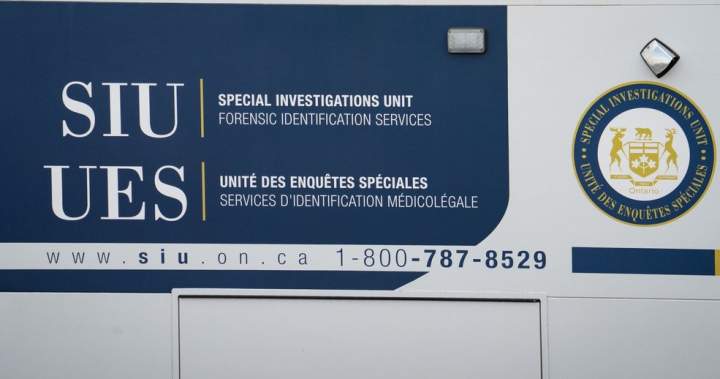Uncategorized
Aaron Judge shows why it’s unwise for fans to taunt Aaron Judge
Neque porro quisquam est, qui dolorem ipsum quia dolor sit amet, consectetur, adipisci velit, sed quia non numquam eius.

Sed ut perspiciatis unde omnis iste natus error sit voluptatem accusantium doloremque laudantium, totam rem aperiam, eaque ipsa quae ab illo inventore veritatis et quasi architecto beatae vitae dicta sunt explicabo.
Neque porro quisquam est, qui dolorem ipsum quia dolor sit amet, consectetur, adipisci velit, sed quia non numquam eius modi tempora incidunt ut labore et dolore magnam aliquam quaerat voluptatem. Ut enim ad minima veniam, quis nostrum exercitationem ullam corporis suscipit laboriosam, nisi ut aliquid ex ea commodi consequatur.
At vero eos et accusamus et iusto odio dignissimos ducimus qui blanditiis praesentium voluptatum deleniti atque corrupti quos dolores et quas molestias excepturi sint occaecati cupiditate non provident, similique sunt in culpa qui officia deserunt mollitia animi, id est laborum et dolorum fuga.
Quis autem vel eum iure reprehenderit qui in ea voluptate velit esse quam nihil molestiae consequatur, vel illum qui dolorem eum fugiat quo voluptas nulla pariatur.
Temporibus autem quibusdam et aut officiis debitis aut rerum necessitatibus saepe eveniet ut et voluptates repudiandae sint et molestiae non recusandae. Itaque earum rerum hic tenetur a sapiente delectus, ut aut reiciendis voluptatibus maiores alias consequatur aut perferendis doloribus asperiores repellat.
Lorem ipsum dolor sit amet, consectetur adipisicing elit, sed do eiusmod tempor incididunt ut labore et dolore magna aliqua. Ut enim ad minim veniam, quis nostrud exercitation ullamco laboris nisi ut aliquip ex ea commodo consequat.
“Duis aute irure dolor in reprehenderit in voluptate velit esse cillum dolore eu fugiat”
Nemo enim ipsam voluptatem quia voluptas sit aspernatur aut odit aut fugit, sed quia consequuntur magni dolores eos qui ratione voluptatem sequi nesciunt.
Et harum quidem rerum facilis est et expedita distinctio. Nam libero tempore, cum soluta nobis est eligendi optio cumque nihil impedit quo minus id quod maxime placeat facere possimus, omnis voluptas assumenda est, omnis dolor repellendus.
Nulla pariatur. Excepteur sint occaecat cupidatat non proident, sunt in culpa qui officia deserunt mollit anim id est laborum.
Uncategorized
Ontario paramedic fired for criticizing Israel on social media hopes to be reinstated

A York Region paramedic says she was looking forward to working in the field again after a six-year union leave, but she was abruptly fired last month over a Facebook comment criticizing Israel’s military actions in the Middle East.
“I was about to be back on an ambulance at the end of July,” Katherine Grzejszczak said Thursday in her first public comments about the case.
“I was actually really excited and looking forward to going back out, to being a paramedic.”
Instead, the veteran paramedic said she was fired on June 20 after she criticized Israel’s bombing of Gaza and several countries, and accused the country of starving Palestinian children and killing health-care workers in a comment on a union social media post.
The Regional Municipality of York said last month that officials launched an investigation into an employee’s “concerning comments on social media” on June 19, which led to a dismissal.
“I think it’s extremely unfortunate that we are here,” said Grzejszczak, who served on the Canadian Union of Public Employees Ontario’s executive board.
“It’s not a good time, it has been an extremely emotionally difficult time for me.”
Grzejszczak told reporters that the comment she made was in line with her “professional obligations” as a health worker.
“I love my job as a paramedic because it is first and foremost about preserving life and alleviating suffering,” she said, adding that calling for an end to “a genocide is not a threat to public safety, it is public safety.”

Get breaking National news
For news impacting Canada and around the world, sign up for breaking news alerts delivered directly to you when they happen.
“I really hope that I’m soon reinstated so that I can continue using my life saving skills to serve the residents of York Region,” she said at a news conference, surrounded by supporters and union members.
Her dismissal has triggered concern among free speech advocates and lawyers who say it was a violation of Grzejszczak’s Charter rights.
“Whether one agrees or disagrees with the content of her Facebook post, she was exercising her Charter-protected right to freedom of expression,” Daniel Paré, a senior fellow at the Centre for Free Expression at Toronto Metropolitan University, said at the press conference.
He called on York Region to reinstate Grzejszczak, who has been a paramedic since 2010.
“She is to be judged on whether she meets her professional standards of care, not her political beliefs,” Paré said. “And let’s be clear, there has been no suggestion that Katherine’s political beliefs have ever resulted in any inappropriate treatment of any patient.”
Reached for comment Thursday, a spokesperson for the Regional Municipality of York forwarded the statement originally issued in June about an employee’s “concerning comments.”
Patrick Casey also said “there is no change from York Region since the matter was initially addressed.”
Krista Laing, the chair of CUPE Ontario Municipal Workers, said the entire process of firing Grzejszczak took less than 48 hours, and alleged there was no proper investigation.
She said the decision sets a precedent that should worry workers across the province, and CUPE will continue to fight for her reinstatement.
The Centre for Free Expression says it has seen an increase in the number of people being penalized for expressing their political views since the start of the Israel-Hamas war.
The latest war in Gaza began with the Hamas-led attack on southern Israel on Oct. 7, 2023, in which militants killed 1,200 people and took roughly 250 hostages.
Gaza’s Health Ministry said earlier this week that the war’s toll among Palestinians had surpassed 60,000. The ministry, which operates under the Hamas government, doesn’t distinguish between militants and civilians in its count, but has said that more than half of the dead are women and children.
The United Nations and other independent experts view its figures as the most reliable count of casualties. Israel has disputed the figures, saying it only targets militants and it blames civilian deaths on Hamas.
–With files from The Associated Press
© 2025 The Canadian Press
Uncategorized
Man shot dead by police inside northern Ontario court, SIU investigating

Ontario’s police watchdog is investigating a report that an officer fatally shot a man inside a courtroom in a remote part of northern Ontario on Thursday.
Kristy Denette, a spokesperson for the Special Investigations Unit, said a team of investigators was heading to the scene in Wapekeka First Nation but more details wouldn’t be available until Friday.
Ontario Provincial Police said late Thursday that an officer from its Sioux Lookout detachment shot an “individual armed with a knife on Wapekeka First Nation” around noon, but did not specify the location.

Get daily National news
Get the day’s top news, political, economic, and current affairs headlines, delivered to your inbox once a day.
“As a result, the armed individual was pronounced deceased at the scene,” OPP said in a news release.
Lawyer Karen Seeley said she heard about the shooting from colleagues who were present at what she described as a makeshift courtroom inside a community centre.
Seeley, a partner at a Dryden, Ont.-based law firm, said witnesses described a person who walked into court and pulled out what appeared to be a knife before an officer shot him.
“It was shocking,” said Seeley, who has been practising law in northern Ontario for many years.
“Nothing like this has ever happened … to my knowledge,” she said, adding that her colleagues and the community are shaken.
The Wapekeka courthouse is described on its website as a fly-in location that provides a small number of court services on limited dates.
Seeley said that court, like many others in northern parts of the province, doesn’t have metal detectors.
© 2025 The Canadian Press
Uncategorized
Toronto’s Old City Hall opens its doors for wedding ceremonies – Toronto

It’s not rare to see the lobby of Toronto City Hall bustling with brides and grooms attempting to shepherd family members up to the wedding chapel, but it is uncommon to see the same thing across Bay Street at Old City Hall where, for the first time in decades, the historic building is opening its doors to host civil weddings.
The city has been trying to find a permanent use for the civic building ever since provincial court services officially vacated the property in the spring. While the future of Old City Hall is being decided, the city has reopened the doors to the public this summer. Each Friday in August, visitors can wander the halls and listen to an audio tour. On select Thursdays, couples can even get married there.
“We’ve been looking for light-touch programming that we can bring in quickly and easily, and that included opening up weddings here again,” said Scott Barrett, the city’s director of key assets and property management. “Recently, we just had the first wedding held in this building in about 40 years, which was really exciting.”
The building can accommodate up to 12 civil weddings daily. Interest has been growing, prompting the city to add more dates throughout August and September.

Get breaking National news
For news impacting Canada and around the world, sign up for breaking news alerts delivered directly to you when they happen.
Samantha Pedwell and her partner, Ian Longo, learned that weddings were being performed in the historic building while picking up their marriage certificate. “We saw they were advertising in the office there, so we decided to just go for it,” said Pedwell.
The grand staircase may be the focal point for many wedding photos to come, but the actual ceremonies are taking place in the former city council chambers, which served as a courtroom when the municipality rented the building out in the late 1960s.
Sitting in the room with its high ceilings and ornate panelling, Barrett said the reception from couples has already been spectacular. “They come in and they’re just in awe of the space, and the scale of the space, and it makes for a really special occasion,” he said.
Barrett said the whole purpose of adding light activations in the building is not only to put it to use, but to take some of the mystery away for the public who pass by the structure. Ahead of their wedding ceremony, Pedwell and Longo admitted they had never set foot inside the 126-year-old building before.
“It’s super exciting,” said Longo. “It’s a great piece of Toronto history. We get to celebrate our love together in a really beautiful place. It’s a great day.”
There’s also the added benefit of the ceremony being cost-effective. The total price for a 30-minute ceremony is $337.95, including HST.
“A lot of people spend a ton of money on venues, but they don’t even get something like this,” said Pedwell. “So we’ll have a photographer come in, we’ll take some photos on the steps, and this is basically all you could ever want from a wedding.”
Both agreed the city should continue offering the service beyond the dates currently up for grabs, but Barrett said that will largely depend on demand.
“What we’re seeing now is a lot of interest,” Barrett said. “If that interest is maintained, then we’ll look at opportunities to add and grow over time, and I think it will remain a wonderful compliment to what’s already happening at city hall.”
© 2025 Global News, a division of Corus Entertainment Inc.
-

 Uncategorized2 months ago
Uncategorized2 months agoAccording to Dior Couture, this taboo fashion accessory is back
-

 Uncategorized2 months ago
Uncategorized2 months agoThese ’90s fashion trends are making a comeback in 2017
-

 Uncategorized2 months ago
Uncategorized2 months agoThe old and New Edition cast comes together to perform
-

 Uncategorized2 months ago
Uncategorized2 months agoUber and Lyft are finally available in all of New York State
-

 Uncategorized2 months ago
Uncategorized2 months agoNew Season 8 Walking Dead trailer flashes forward in time
-

 Uncategorized2 months ago
Uncategorized2 months agoMeet Superman’s grandfather in new trailer for Krypton
-

 Uncategorized2 months ago
Uncategorized2 months ago6 Stunning new co-working spaces around the globe
-

 Uncategorized2 months ago
Uncategorized2 months agoThe final 6 ‘Game of Thrones’ episodes might feel like a full season






